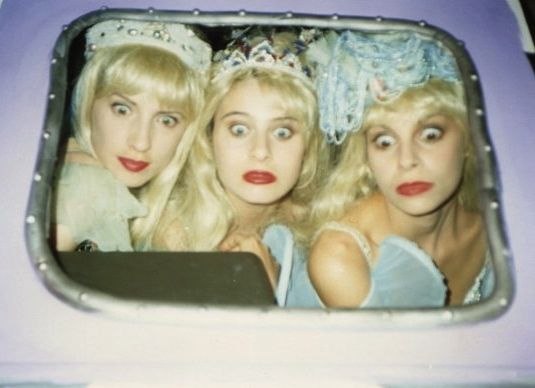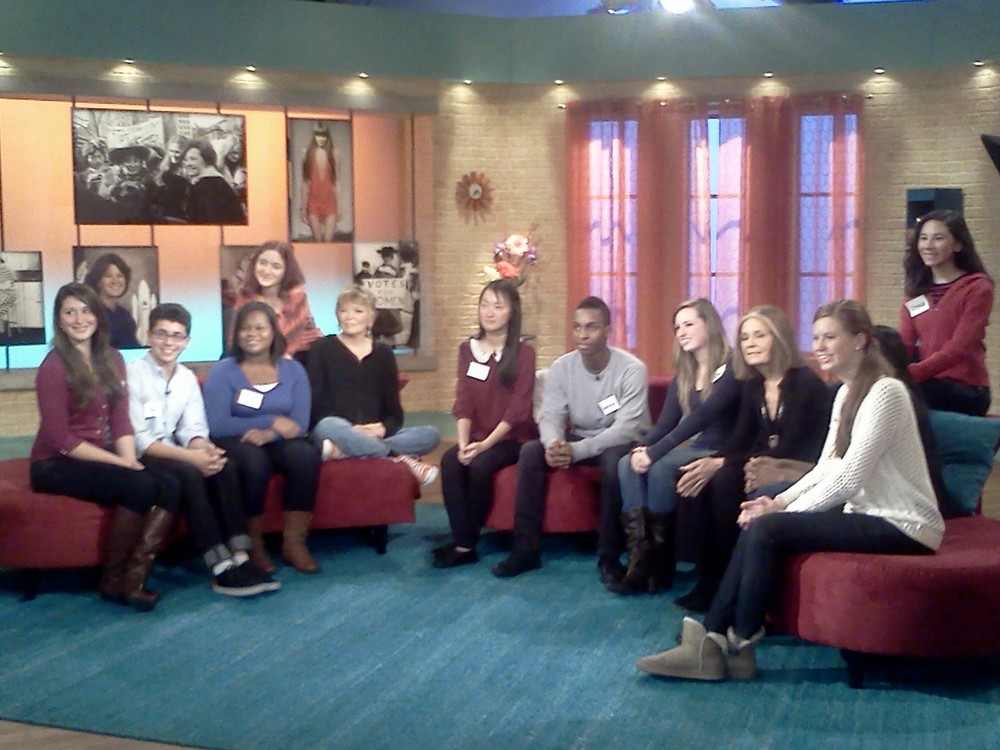
Sarah Miles, Fifi Dennison and me in Coping With Cupid
At the end of the 1980s, I performed as part of a trio of girls in blonde wigs called Golden Syrup. We intended to upend traditional views of women as objects by wearing granny underwear instead of bikinis and writhing on the floor like slugs instead of doing girly pushups or giving our audience the V sign instead of smiling.
Extract from Coping With Cupid, directed by Viv Albertine of The Slits
Men got off on it anyway, and getting that kind of attention was a slippery slope. One of our final projects was a BFI short film called Coping With Cupid. I joined and moved into the Unification Church before it was released, so only learned later that we were banned from our own screening because the BFI feared an “emotional bloodbath.”

Teens on Nickelodeon with Linda Ellerbee and Gloria Steinem
Yesterday, I worked on a Nickelodeon Lucky Duck production about feminism, featuring Gloria Steinem, Linda Ellerbee and some very articulate teenagers. In 1963, Gloria Steinem wrote an essay called, “A Bunny’s Tale,” describing the ridiculousness of being a Playboy Bunny. Girls today still deal with similar issues of body image and public representations of women.
In “How to Be a Woman,” Caitlin Moran writes about how women are trivialized by the focus on their appearance. She writes, “paps will take pictures of women going to the shops in jeans and a sweater, with no makeup on, and make it look like her world is on the verge of crumbling because she didn’t have a blow-dry before she left the house.”
Several of the teens on the Nickelodeon show are part of a group called the Spark Summit, which aims to "reject the commodified, sexualized images of girls in media and support the development of girls' healthy sexuality and self-esteem." They collected over 84,000 signatures in a petition delivered to Seventeen magazine, which then made a commitment to not alter the body size or face shape of the girls and models in the magazine.
From the Nickelodeon show, I learned that the Equal Rights Amendment, which was drafted in 1923 still awaits approval. It says simply:
“Men and women shall have equal rights throughout the United States and every place subject to its jurisdiction. Congress shall have power to enforce this article by appropriate legislation.”
Gloria Steinem and Linda Ellerbee questioned how anyone could disagree with this statement. Some of the more conservative teens argued that the 13th Amendment negates the necessity for the ERA, and that one can’t ignore the inherent differences between men and women.
Steinem suggested it would be better to forget about generalizations. Only when we see people as individuals rather than stereotypes can we truly relate as human beings.
I grew up having mixed feelings about what it meant to be a woman. I agree with Steinem that the qualities we see as masculine or feminine exist on a continuum of human characteristics. It can only liberate us to view one another more as individuals and less as preconceived types. Yesterday, I was happy to see that young people are getting smarter about this all the time.